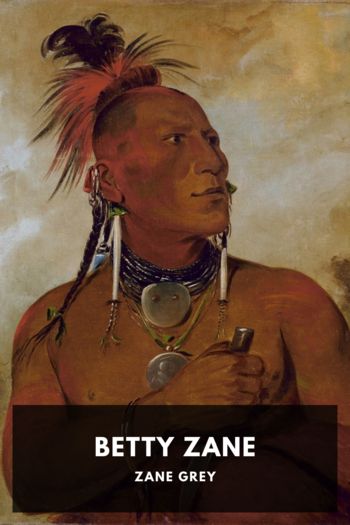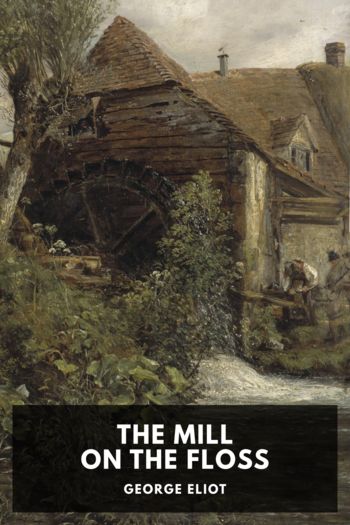Riders of the Purple Sage by Zane Grey (best thriller books to read .TXT) 📕

Description
In a small Mormon community in southern Utah, Jane Withersteen, a young, unmarried Mormon woman faces growing pressure to marry a local elder of her church. Elder Tull, a polygamist, already has two wives and seeks to marry Jane not just for her beauty, but to take control of the ranch her late father passed on to her.
Jane’s resistance to marriage only serves to increase the mounting resentment against “Gentiles” (non-Mormons) in the area. Bern Venters, one of Jane Withersteen’s ranch hands and potential suitor, becomes the focus of this resentment and is nearly killed by Elder Tull and his men before a mysterious rider interrupts the procedure. The rider, a man named Lassiter, is a gunslinger known for his exploits in other Mormon settlements further north.
Lassiter’s intercession on Venters’ behalf sets off a chain reaction of threats, violence, theft, and murder as Jane Withersteen fights to maintain both her ranch and her independence.
First published in 1912, Riders of the Purple Sage is considered to have played a prominent role in shaping the Western genre. It was Zane Grey’s best-selling book and has remained popular ever since.
Read free book «Riders of the Purple Sage by Zane Grey (best thriller books to read .TXT) 📕» - read online or download for free at americanlibrarybooks.com
- Author: Zane Grey
Read book online «Riders of the Purple Sage by Zane Grey (best thriller books to read .TXT) 📕». Author - Zane Grey
“Beaver!” he exclaimed. “By all that’s lucky! The meadow’s full of beaver! How did they ever get here?”
Beaver had not found a way into the valley by the trail of the cliff-dwellers, of that he was certain; and he began to have more than curiosity as to the outlet or inlet of the stream. When he passed some dead water, which he noted was held by a beaver dam, there was a current in the stream, and it flowed west. Following its course, he soon entered the oak forest again, and passed through to find himself before massed and jumbled ruins of cliff wall. There were tangled thickets of wild plum-trees and other thorny growths that made passage extremely laborsome. He found innumerable tracks of wildcats and foxes. Rustlings in the thick undergrowth told him of stealthy movements of these animals. At length his further advance appeared futile, for the reason that the stream disappeared in a split at the base of immense rocks over which he could not climb. To his relief he concluded that though beaver might work their way up the narrow chasm where the water rushed, it would be impossible for men to enter the valley there.
This western curve was the only part of the valley where the walls had been split asunder, and it was a wildly rough and inaccessible corner. Going back a little way, he leaped the stream and headed toward the southern wall. Once out of the oaks he found again the low terrace of aspens, and above that the wide, open terrace fringed by silver spruces. This side of the valley contained the wind or water worn caves. As he pressed on, keeping to the upper terrace, cave after cave opened out of the cliff; now a large one, now a small one. Then yawned, quite suddenly and wonderfully above him, the great cavern of the cliff-dwellers.
It was still a goodly distance, and he tried to imagine, if it appeared so huge from where he stood, what it would be when he got there. He climbed the terrace and then faced a long, gradual ascent of weathered rock and dust, which made climbing too difficult for attention to anything else. At length he entered a zone of shade, and looked up. He stood just within the hollow of a cavern so immense that he had no conception of its real dimensions. The curved roof, stained by ages of leakage, with buff and black and rust-colored streaks, swept up and loomed higher and seemed to soar to the rim of the cliff. Here again was a magnificent arch, such as formed the grand gateway to the valley, only in this instance it formed the dome of a cave instead of the span of a bridge.
Venters passed onward and upward. The stones he dislodged rolled down with strange, hollow crack and roar. He had climbed a hundred rods inward, and yet he had not reached the base of the shelf where the cliff-dwellings rested, a long half-circle of connected stone house, with little dark holes that he had fancied were eyes. At length he gained the base of the shelf, and here found steps cut in the rock. These facilitated climbing, and as he went up he thought how easily this vanished race of men might once have held that stronghold against an army. There was only one possible place to ascend, and this was narrow and steep.
Venters had visited cliff-dwellings before, and they had been in ruins, and of no great character or size but this place was of proportions that stunned him, and it had not been desecrated by the hand of man, nor had it been crumbled by the hand of time. It was a stupendous tomb. It had been a city. It was just as it had been left by its builders. The little houses were there, the smoke-blackened stains of fires, the pieces of pottery scattered about cold hearths, the stone hatchets; and stone pestles and mealing-stones lay beside round holes polished by years of grinding maize—lay there as if they had been carelessly dropped yesterday. But the cliff-dwellers were gone!
Dust! They were dust on the floor or at the foot of the shelf, and their habitations and utensils endured. Venters felt the sublimity of that marvelous vaulted arch, and it seemed to gleam with a glory of something that was gone. How many years had passed since the cliff-dwellers gazed out across the beautiful valley as he was gazing now? How long had it been since women ground grain in those polished holes? What time had rolled by since men of an unknown race lived, loved, fought, and died there? Had an enemy destroyed them? Had disease destroyed them, or only that greatest destroyer—time? Venters saw a long line of blood-red hands painted low down upon the yellow roof of stone. Here was strange portent, if not an answer to his queries. The place oppressed him. It was light, but full of a transparent gloom. It smelled of dust and musty stone, of age and disuse. It was sad. It was solemn. It had the look of a place where silence had become





Comments (0)